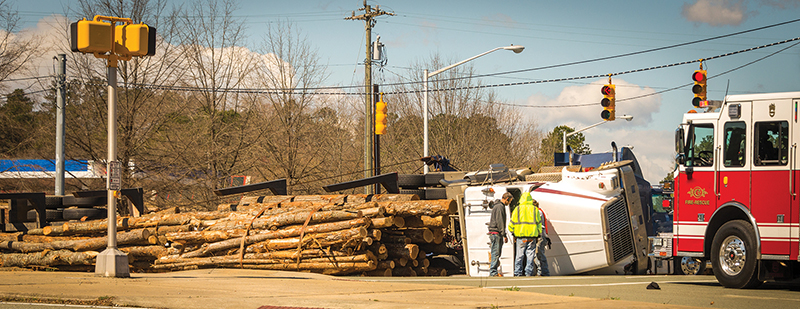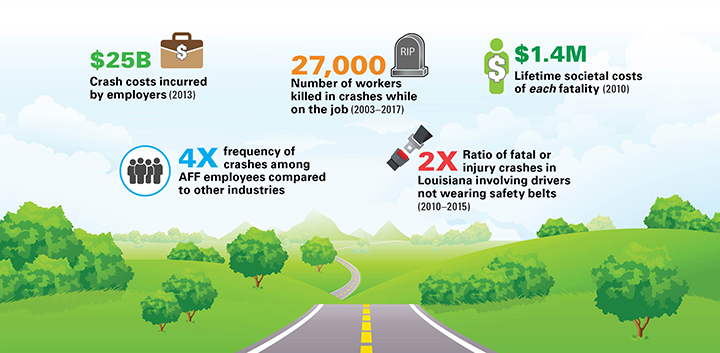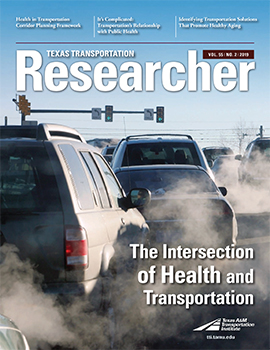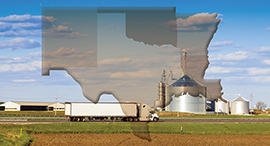Driving for work can be deadly. According to the Centers for Disease Control and Prevention (CDC), motor vehicle crashes are the leading cause of work-related deaths in the United States.

Beyond the tragic loss of life or permanent injury resulting from such incidents, societal costs are mounting via rising health care costs and increasing business costs passed along to consumers. CDC reports that between 2003 and 2017, more than 27,000 U.S. workers died in crashes while on the job, costing employers about $25 billion in 2013 alone.
Workers in the agricultural, forestry and fishing (AFF) industries experience fatal work-related vehicle crashes at a higher rate than their counterparts in other industries — four times as often, in fact. Yet, little is known about why, especially in the Southwest Agricultural Region (Arkansas, Louisiana, New Mexico, Oklahoma and Texas). AFF drivers across the region were involved in at least 4,778 crashes, 12 to 14 percent of which were fatal, serious or non-incapacitating crashes, between 2010 and 2017. Of the states studied, Louisiana and Texas reported the most work-related AFF crashes, with Louisiana enjoying the dubious distinction of highest rate of crashes in the agricultural and logging industries.
Led by Texas A&M Transportation Institute (TTI) Research Scientist Eva Shipp, researchers from TTI and a team of Texas A&M University System agencies — including the Texas A&M School of Public Health and the Texas A&M Department of Statistics — examined Louisiana crash records from 2010 to 2015. After separating records with narratives and stratifying them by vehicle type, Shipp’s team created two lists of keywords: an inclusion list and exclusion list. They then developed a semi-automated Microsoft® Excel-based algorithm to screen logging- and agricultural-related crashes using both sets of keywords, and then validated the tool using a gold standard set of agricultural narratives developed through manual review. (A gold standard validation process involves using a set of standard inputs that yield known outputs to test a tool’s efficacy.)

Beyond the National Highway Traffic Safety Administration’s Fatality Analysis Reporting System, no regional database existed before this project was completed for crash and injury surveillance that accounted for nonfatal and less severe crashes. And parsing the reports that do exist to identify specific causal factors can be a time-consuming task.
“People often use common keywords to classify the circumstances surrounding a crash,” Shipp says. “Yet, in the quest to be exacting and specific — which is absolutely essential to properly differentiating crash data — you can sometimes lose vital details that don’t fit that limited nomenclature.”
Capturing those details is why most crash reports include a narrative field that allows free-form reporting by the individual — usually a law enforcement officer — making the report. The narrative field can contain a gold mine of information to determine factors that contribute to crashes. Analysts can then use that data to identify potential strategies for preventing similar crashes. To date, the only way to review these narratives has been to read them closely and note significant factors — a costly, labor-intensive process. Now, an automated, easy-to-use Excel tool is available.
“We were able to demonstrate that our tool correctly classified agricultural crash narratives 96.1 percent of the time,” Shipp says. “We also showed that using the tool can reduce narratives requiring manual review by up to 59.4 percent.”
The tool is free to use and available at https://groups.tti.tamu.edu/cts/swagcrash/. Using it, analysts can better understand what causes AFF crashes and develop interventions to prevent them. From modifying driver behavior — for example, encouraging more drivers to use seat belts, a factor in logging truck crashes — to identifying roadside safety improvements, the Excel-based tool can save not only lives but societal costs as well across the board — from prices on store shelves to the overall burden of health insurance premiums.
Shipp and her team are using the regional database they created to extend their research and refine their tool to apply to other types of crashes and crash years.
“The results of this important research by TTI and Texas A&M could help identify factors contributing to these occupational transportation fatalities,” says Vanessa Casanova, associate professor at The University of Texas Health Science Center at Tyler. The study was funded by the Southwest Center for Agricultural Health, Injury Prevention and Education through a cooperative agreement with the National Institute for Occupational Safety and Health. “Once we better understand those factors,” Casanova says, “we can create life-saving interventions for drivers in the agricultural sector.”

